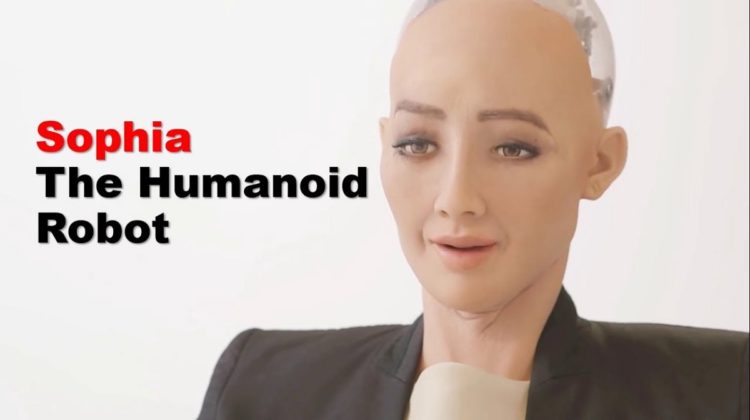
Sentience in AI refers to the capability of machines to perceive things, to be self-aware, to show emotions, and to communicate with humans.
I came across a certain movie called ‘Outside the Wire’ on Netflix over the weekend and decided to watch it. As it was playing, I could not help but get excited about what I was seeing on my device. It was as if the future was already with us and warfare was on another level. Before you all die of curiosity, let me give my own synopsis of the movie.
The year is 2036. The movie is set in Eastern Europe, specifically Ukraine. There has been a vicious civil war because a criminal warlord Viktor Koval (Pilou Asbæk) has received aid from the Kremlin and wants to make Ukraine a part of Russia. The US Marines are on the ground as well as being assisted by drone pilots to maintain peace in the affected region.
Damson Idris plays the role of one of the best drone pilots (Lt. Thomas Harp) and his mantra is to try to save as many lives as possible. So when two marines die after Harp initiates a drone strike that saved 38 other men, he is punished by being taken to Camp Nathaniel, in the middle of the war zone. He is assigned to Captain Leo (Anthony Mackie), a fully human-looking android with flesh covering a mechanized exoskeleton, great strength, speed, and sentience but also the ability to feel pain, make moral choices or decisions, and even express a sense of humor!
The plan is to track down Koval and ensure that he does not gain access to the nuclear weapons Russia left in Ukraine during the Cold War. At the end of the movie, Leo is left to die by Harp because the cyborg ‘felt’ that for the war to end, then the Americans should be ones to suffer in order for them to pay for their own offenses.
This led me to ask three questions.
1. What is a fully human-looking android?
2. What is sentience in artificial intelligence (AI)?
3. How can it be achieved?
Well. I will try to explain this in the best way possible from the research I have done so far.
A humanoid android is a robot built or designed to resemble a human being and is made from a flesh-like material.
An example of a humanoid robot is Sophia who was first turned on on February 14, 2016. She is able to recognize human faces, various hand gestures, and can sense emotional expressions. When conversing with her, she can try to determine the extent of your feelings. She has got her emotions too which is done by simulating human evolutionary psychology and various regions of the brain. This is fascinating, to say the least!
Sentience in AI refers to the capability of machines to perceive things, to be self-aware, to show emotions, and to communicate with humans. For example, a machine being able to express sadness when a great employee is fired from their job! Sounds absurd, right? Just from the example, I have given of Sophia, I am almost certain that she is sentient.
According to Michael Collins, the author of the article ‘The Rise of the Machines’, for machines or robots to become fully sentient, computer scientists would have to simulate the capabilities of the human brain and have a replica of the same for the machines. I am sure we know how the brain works from our biology class but we can do a recap.
The brain is made up of the subconscious and conscious mind which are required for perception. It has lots of neurons that re-wire after learning a new task. No programming goes into it, its neural networks are parallel and the billions of neurons are fired in order to accomplish certain goals. On the other hand, a computer has a fixed architecture, depends on input to perform a task and produce an output. It contains billions of transistors.
For us to achieve full sentience in machines/robots, we will have to match the functions of the transistors to the interactions of the brain’s neural network. Each neuron has the capability to communicate with 10,000 other neurons. Unlike digital computers with fixed architecture, the brain can constantly re-wire its neurons to learn and adapt. Instead of programs, neural networks learn by doing and remembering, and this vast network of connected neurons gives the brain excellent pattern recognition. The brain is a powerhouse!
According to AI theorists, this can be possible if at some point in the next years a microprocessor will be manufactured that can attain a ‘singularity point’ to enable machines to be self-aware. This is the point where AI will be able to evolve through its own manipulations and develop its own version of life. The systems will be able to self-improve themselves. This hypothetical point in time is also called technological singularity.
How this is going to happen is explained as follows:
“According to the most popular version of the singularity hypothesis, called intelligence explosion, an upgradable intelligent agent will eventually enter a “runaway reaction” of self-improvement cycles, each new and more intelligent generation appearing more and more rapidly, causing an “explosion” in intelligence and resulting in a powerful superintelligence that qualitatively far surpasses all human intelligence.”
Some scientists believe that we may never get to this point in time but the Father of AI, Ray Kurzweil, believes that it is coming and will possibly happen in 2045.
As computer scientists battle with how to work around this, we cannot deny the fact that at some point in our future lives, machines will be fully part of us and we may as well begin to learn how to engage and deal with them to better our society and solve societal problems.
This will definitely spark lots of interest in the AI world and I am excited to see what the future holds.
References
